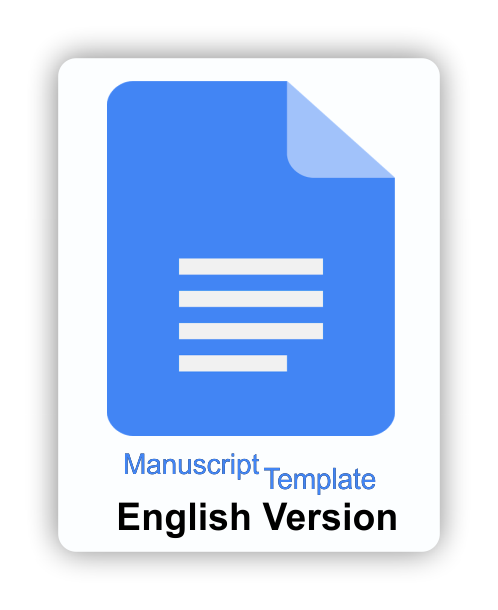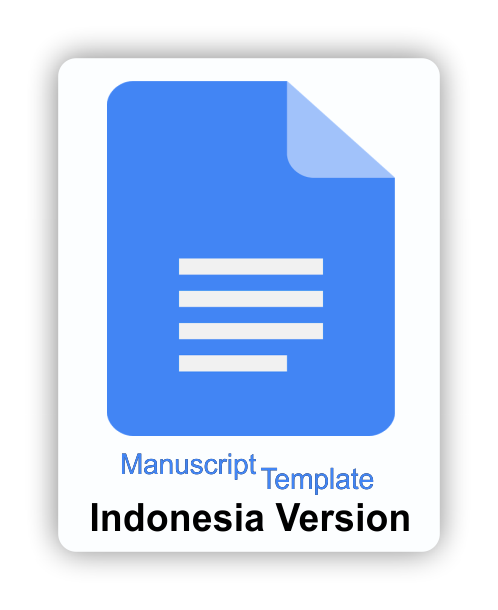Using the second generation Web 2.0 tools in developing university EFL students' english language skills
Downloads
Al-Naibi, I., Al-Jabri, M., & Al-Kabani, I. (2018). Promoting students' paragraph writing using edmodo: An action research. TOJET: The Turkish Online Journal of Educational Technology, 17(1), 130–143. https://eric.ed.gov/?id=EJ1165747
Alivi, J. S. (2019). A review of TPACK and SAMR models: How should language teachers adopt technology? Journal of English for Academic and Specific Purposes, 2(2), 1–11. https://doi.org/10.18860/jeasp.v2i2.7944
Alsaidi, A. A., & Al-Ruheili, H. S. (2015). Students' perceptions on the effectiveness of using Edmodo in EFL classes. 2015 GAI Istanbul International Academic Conference Proceeding, 1–9. https://www.researchgate.net/publication/340967513_2015-istanbul-conference-proceedings
Alsmari, N. A. (2019). Fostering EFL students' paragraph writing using Edmodo. English Language Teaching, 12(10), 44–54. https://doi.org/10.5539/elt.v12n10p44
Anjaniputra, A. G., & Salsabila, V. A. (2018). The merits of Quizlet for vocabulary learning at tertiary level. Indonesian EFL Journal, 4(2), 1–11. https://doi.org/10.25134/ieflj.v4i2.1370
Ary, D., Jacobs, L. C., Irvine, C. K. S., & Walker, D. (2006). Introduction to research in education. Cengage Learning.
Aşıksoy, G. (2018). Awareness towards the use of Web 2.0 technologies for language learning. Journal of Language and Linguistic Studies, 14(2), 240–251. www.jlls.org
AteÅŸ í‡obanoÄŸlu, A., Esin Yí¼cel, Z., Uzunboylar, O., & Ceylan, B. (2017). A blended mentoring practice for designing E-material for English as a foreign language learning. Turkish Online Journal of Qualitative Inquiry, 8(1), 141–160. https://doi.org/10.17569/tojqi.288860
Balula, A., Martins, C., & Marques, F. (2014). Enhancing business english terminology through concept mapping. Conference: 6th Annual International Conference on Education and New Learning Technologies - EDULEARN14, 2355–2362. https://www.researchgate.net/publication/265907542_Enhancing_Business_English_Terminology_Through_Concept_Mapping
Budiman, A., Rahmawati, R., & Ulfa, R. A. (2016). EFL teacher's belief and practice on integrating ict in the classroom: A case study on the implementation of samr model in teaching reading descriptive text at Ma Assalam, Sukoharjo. Jurnal Penelitian Humaniora, 19(2), 39–51. https://doi.org/10.23917/humaniora.v19i2.6809
Chaiyo, Y., & Nokham, R. (2017). The effect of Kahoot, Quizizz and Google Forms on the student's perception in the classrooms response system. 2017 International Conference on Digital Arts, Media and Technology (ICDAMT), 1–5. https://doi.org/10.1109/ICDAMT.2017.7904957
Clipa, O. (2014). Transdisciplinarity and communicative action in multidimensional education. Romanian Journal for Multidimensional Education, 6(2), 9–13. http://dx.doi.org/10.18662/rrem/2014.0602.01
Ferdig, R. E. (2007). Examining social software in teacher education. Journal of Technology and Teacher Education, 15(1), 1–10. https://www.learntechlib.org/primary/j/JTATE/v/15/n/1/
Fraenkel, J., Wallen, N., & Hyun, H. (2012). How to design and evaluate research in education. McGraw-Hill Education.
Getting, B. (2007, April). Basic definitions: Web 1.0, web. 2.0, web 3.0. Practicalecommerce. https://www.practicalecommerce.com/Basic-Definitions-Web-1-0-Web-2-0-Web-3-0
Getty, & Pixelfusion. (2020). Covid-19: 10 recommendations to plan distance learning solutions. UNESCO. https://www.unesco.org/en/articles/covid-19-10-recommendations-plan-distance-learning-solutions
Girgin, P., & CabaroÄŸlu, N. (2021). Web 2.0 supported flipped learning model: EFL students' perceptions and motivation. Cukurova University Faculty of Education Journal, 50(2), 858–876. https://doi.org/10.14812/cuefd.944217
Guarascio, A. J., Nemecek, B. D., & Zimmerman, D. E. (2017). Evaluation of students' perceptions of the Socrative application versus a traditional student response system and its impact on classroom engagement. Currents in Pharmacy Teaching and Learning, 9(5), 808–812. https://doi.org/10.1016/j.cptl.2017.05.011
Hamilton, E. R., Rosenberg, J. M., & Akcaoglu, M. (2016). The substitution Augmentation modification redefinition (SAMR) model: A critical review and suggestions for its use. TechTrends, 60(5), 433–441. https://doi.org/10.1007/s11528-016-0091-y
Holt, K. (2020). Three ways to plan for equity during the coronavirus school closures. UNESCO. https://www.unesco.org/en/articles/three-ways-plan-equity-during-coronavirus-school-closures-25-march-2020
Iwuanyanwu, P. N. (2020). Nature of problem-solving skills for 21st Century STEM learners: What teachers need to know. Journal of STEM Teacher Education, 55(1), 27–40. https://doi.org/10.30707/JSTE55.1/MMDZ8325
Jones, C., Ramanau, R., Cross, S., & Healing, G. (2010). Net generation or digital natives: Is there a distinct new generation entering university? Computers and Education, 54(3), 722–732. https://doi.org/10.1016/j.compedu.2009.09.022
Kapp, K., & O'Driscoll, T. (2010). Designing virtual immersive environments. TD Magazine. https://www.td.org/magazines/td-magazine/designing-virtual-immersive-environments
Levy, M., & Stockwell, G. (2007). Call dimensions: Options and issues in computer-assisted language learning. In Mahwah, NJ: Routledge (Vol. 11, Issue 2). Mahwah, NJ: Routledge. https://www.routledge.com/
Lim, W. N. (2017). Improving student engagement in higher education through mobile-based interactive teaching model using Socrative. IEEE Global Engineering Education Conference, EDUCON, 1, 404–412. https://doi.org/10.1109/EDUCON.2017.7942879
Manowong, S. (2017). Incorporating online tools to promote english reading for EFL learners: An action research study. Pasaa Paritat Journal, 32(1), 98–124. https://www.culi.chula.ac.th/en/pasaa-paritat/view/8
Marlatt, R. (2019). "I didn't say, "˜Macbeth,' it was my Google Doc!": A secondary English case study of redefining learning in the 21st century. E-Learning and Digital Media, 16(1), 46–62. https://doi.org/10.1177/2042753018817544
McLeod, J., & Vasinda, S. (2008). Critical literacy and Web 2.0: Exercising and negotiating power. Computers in the Schools, 25(3–4), 259–274. https://doi.org/10.1080/07380560802394815
McLoughlin, C., & Lee, M. J. W. (2010). Pedagogy 2.0: Critical challenges and responses to Web 2.0 and social software in tertiary teaching. In Web 2.0-Based E-Learning: Applying Social Informatics for Tertiary Teaching (Vol. 1, Issue 1, pp. 43–69). IGI Global. https://doi.org/10.4018/978-1-60566-294-7.ch003
Mohamad, A. M. (2020). Student as teacher – alternative revision method via Quizizz app. Malim: Jurnal Pengajian Umum Asia Tenggara, 21(1), 150–159. https://doi.org/10.17576/malim-2020-2101-12
More, B., & Nicole. (2015). Student attitudes towards the integration of YouTube in online, hybrid, and web-assisted courses: An examination of the impact of course modality on perception. MERLOT Journal of Online Learning and Teaching, 11(1), 55–73. https://jolt.merlot.org/
Muftahu, M. (2020). Higher education and covid-19 pandemic: Matters arising and the challenges of sustaining scademic programs in developing African universities. International Journal of Educational Research Review, 5(4), 417–423. https://doi.org/10.24331/ijere.776470
Nami, F., Marandi, S. S., & Sotoudehnama, E. (2016). CALL teacher professional growth through lesson study practice: An investigation into EFL teachers' perceptions. Computer Assisted Language Learning, 29(4), 658–682. https://doi.org/10.1080/09588221.2015.1016439
Nixon, N., Chittick, S., & Faustino, J. (2020). Pivoting to respond to covid-19: Early thoughts from the philippines. Devpolicy Blog. https://devpolicy.org/pivoting-to-respond-to-covid-19-early-thoughts-from-the-philippines-20200327/
Oblinger, D. G., & Oblinger, J. L. (2005). Educating the next generation. In Science and Justice (Vol. 48, Issue 2). EDUCAUSE. https://www.educause.edu/ir/library/PDF/pub7101.PDF
Orhan Gí¶ksí¼n, D., & Gí¼rsoy, G. (2019). Comparing success and engagement in gamified learning experiences via Kahoot and Quizizz. Computers and Education, 135(1), 15–29. https://doi.org/10.1016/j.compedu.2019.02.015
Paulsen, J. B. (2002). New era trends and technologies in foreign language learning: An annotated bibliography. Interactive Multimedia Electronic Journal of Computer-Enhanced Learning, 4(6), 36–48. http://imej.wfu.edu/Articles/2001/1/05/index.asp
Phỉ, T. T., ThÆ¡, V. Ä., Thí nh, N. L. H., Khanh, H. Ä. P., & Khanh, P. T. (2016). Application of Quizlet.com to teaching and learning business english vocabulary at the University of Economics Ho Chi Minh City. Proceedings of The First International Conference on Language Development, 1(1972), 230–238. http://nnkt.ueh.edu.vn/wp-content/uploads/2015/12/34-015.pdf
Rahayu, I. S. D., & Purnawarman, P. (2019). The use of Quizizz in improving students' grammar understanding through self-assessment. Eleventh Conference on Applied Linguistics (CONAPLIN 2018), 254(1), 102–106. https://doi.org/10.2991/conaplin-18.2019.235
Rahman, A., & Kodriyah, L. (2015). Edmodo: An effective solution to blended learning for EFL learners. Conference: The 1st National Conference on English Language Teaching (NACELT): Applied Linguistics, General Linguistics, and Literature, 22–32. https://www.researchgate.net/publication/311571022_EDMODO_AN_EFFECTIVE_SOLUTION_TO_BLENDED_LEARNING_FOR_EFL_LEARNERS
Romrell, D., Kidder, L. C., & Wood, E. (2014). The SAMR model as a framework for evaluating mlearning. Journal of Asynchronous Learning Networks, 18(2), 1–15. https://eric.ed.gov/?id=EJ1036281
Sanosi, A. B. (2018). The effect of Quizlet on vocabulary acquisition. Asian Journal of Education and E-Learning, 6(4), 71–77. https://doi.org/10.24203/ajeel.v6i4.5446
Thompson, J. (2007). Innovate: Journal of online education is education 1.0 ready for Web 2.0 students? Ä°nnovate: Journal of Online Education, 3(4), 1–8. https://nsuworks.nova.edu/innovate
Thorpe, A. (2001). Digital natives,digital immigrants part 2: Do they really think differently? On The Horizon, 9(6), 1–6. https://doi.org/10.1108/10748120110424843
Thuáºn, P. Ä. (2018). Integration of technology-enhanced language learning tools into teaching English for EFL students. 2018 International Conference Proceedings Graduate Research Symposium Proceedings, 631–641. http://repository.vnu.edu.vn/handle/VNU_123/67608
Tseng, J.-J. (2019). Do EFL teachers transform their teaching with iPads? A TPACK-SAMR approach. Professional Development in CALL: A Selection of Papers, 1(1), 71–85. https://doi.org/10.14705/rpnet.2019.28.871
UNESCO. (2020). Covid-19 educational disruption and response. UNESCO. https://www.unesco.org/en/articles/covid-19-educational-disruption-and-response
Wang, S., & Vasquez, C. (2012). Web 2.0 and Second Language Learning: What Does t he Research Tell Us? CALICO Journal, 29(3), 412–430. https://doi.org/10.11139/cj.29.3.412-430
West, M. L., & West, J. A. (2008). Using Wikis for online collaboration: The power of the read-write web. John Wiley & Sons. https://www.wiley.com/en-ie/Using+Wikis+for+Online+Collaboration:+The+Power+of+the+Read+Write+Web-p-9780470343333
Yundayani, A. (2019). Investigating the effect of Canva on students' writing skills. ENGLISH REVIEW: Journal of English Education, 7(2), 169–176. https://doi.org/10.25134/erjee.v7i2.1800
Zhai, X., Haudek, K. C., Shi, L., Nehm, R. H., & Urban-lurain, M. (2020). From substitution to redefinition: A framework of machine learning-based science assessment. Journal of Research in Science Teaching, 57(9), 1–30. https://doi.org/10.1002/tea.21658
The journal allows the author(s) to hold the copyright without restrictions. Finally, the journal allows the author(s) to retain publishing rights without restrictions
 | Jurnal Inovasi Teknologi Pendidikan by http://journal.uny.ac.id/index.php/jitp is licensed under a Creative Commons Attribution-ShareAlike 4.0 International License. |























